Rob’s been back in touch with a new version of his ‘Farland Howe’, his British model train layouts.
“My model railway Layout is named Farland Howe. It is my interpretation of Britain’s railways and countryside as I perceive it.
I lived in London as a little boy of 6 and was very impressed with the trains we rode on while there. I came from America, and we did have trains but not at the intensity of the U.K.
When we as a family got on a train to sight see or travel around the country, I always asked my dad to take me up to (as I called it then) the engine so I could see it.
I was very impressed with those big red buffer beams, buffers, the smells, the steam and sounds of those locomotives and never got over it.
I call the layout Farland Howe as a nod to Britain being far away from me since I live in North America and my main station which I call Howe Street, hence Farland Howe.
This is the second version of the layout. I started building the first version in 2011 and disassembled it in 2016 and started this current version in March of 2017.
During this period, I have also built two n scale layouts and I called them both the Colorado and Northwestern. The first n scale layout had to be removed to make room for the construction of the current train room and the second I just sold and will be removed very soon.
The first version of Farland was very exciting to build and I got ahead of my knowledge on many occasions.
Since I had no experience building a layout, I made every mistake possible. Many of these errors in design and engineering I corrected in that first version, but some problems were deeply embedded into the design, and I just could not solve them without essentially starting over.
My dear wife agreed to finish off the space in our basement I was using for the layout, and I decided to deconstruct Farland A and eventually start Farland B.
I was determined not to make any of the mistakes of the first Farland on this second version. I spend 3-4 months thinking about and drawing multiple versions of track plans in the space I would eventually have. This proved to be time well spent.
I had a few desires I wanted to satisfy this time.
(1) no duck unders (I am 74),
(2) make the track length as long as possible,
(3) have at least three loops,
(4) use the largest possible minimum curve radius,
(5)no inclines of more than 3%.
For the curve radius I chose 22 5/8 inches as my minimum (572mm). The other loops would run outside this minimum.
The first Farland had a 15-inch (381 mm) radius curve on one section, and I always had to pay attention and slow trains before they got to it or sometimes they would derail. On version two I did not want that worry. If desired I wanted to just let trains run at whatever speed I chose, round and round.
Version 2 of Farland is now undergoing an overhaul. I want to upgrade everything I can to turn it into a better more detailed and highest quality layout I can.
I keep learning through my recent n scale experience and building version 1 & 2 of Farland. Modeling railroads or railways is the greatest hobby. This hobby is a combination of history, engineering, science, electronics, memories, and artistic expression. A layout is never complete. You can keep improving them until your interests move on to something else and your skill level can increase as you grow in your knowledge and experience.
A huge thank you to Alastair for his e-blog/letter where we can all share our experience and which I check every morning to see what is going on and for all the warm comments people have left over the years I have contributed to it.
This video Is a running video. Included are a Class 37 diesel, a class 22 diesel, a class 150 diesel multiple unit and a class 158 diesel multiple unit.
At the end there is a ride with a camera mounted on a wagon and pushed by a class 37 diesel around my freight loop – true to British model train layouts. I wanted to check that all the signals were working on this line, and this is a good way to do it.
While I spent a year and a half building my n scale layout, Farland, sat idle. There is considerable deferred maintenance that I am catching up on and the signals took the worst of the neglect.
Enjoy, thank you,
Rob – Farland Howe”
A huge thanks to Hall of Fame member, Rob, for sharing the latest version of his layout.
British model train layouts built by Americans – always a good combination. There’s also a few posts of Brits building Amercian layouts on the blog too.
You can see his Colorado and Northwestern layout post here.
Here’s a pic from it:
That’s all for today folks.
Please do keep ’em coming.
And if today is the day you pick the hobby back up, the model train Beginner’s Guide is here.
Best
Al
PS Latest ebay cheat sheet is here.

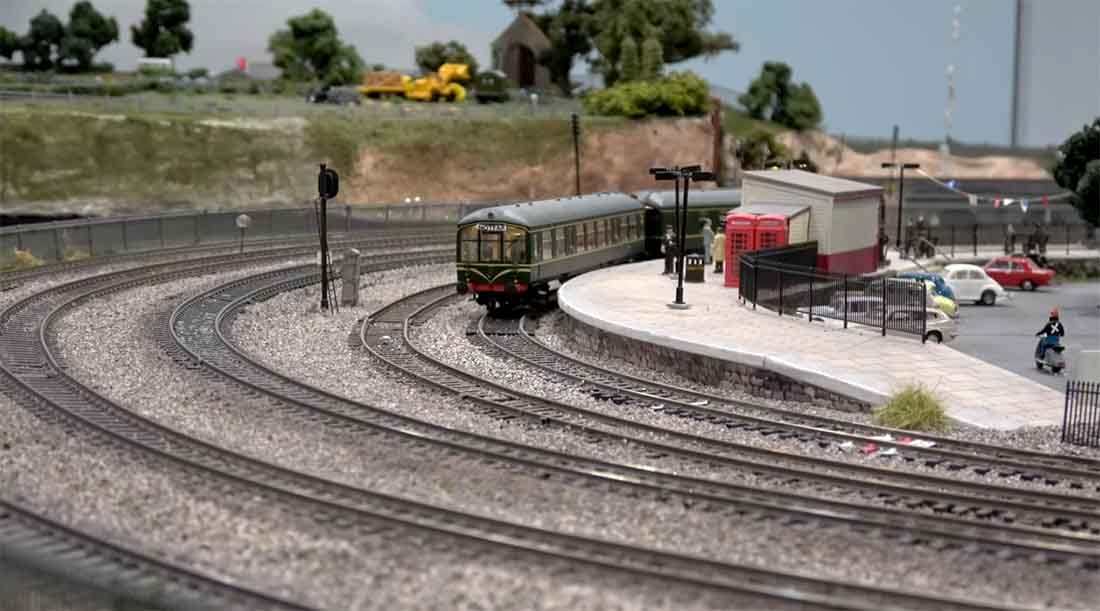
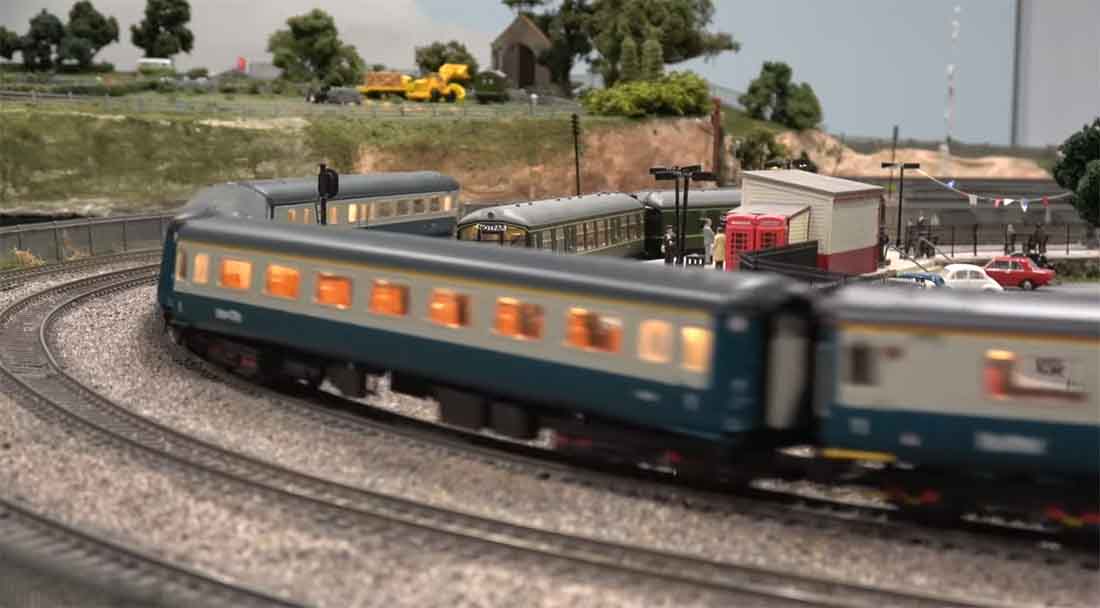
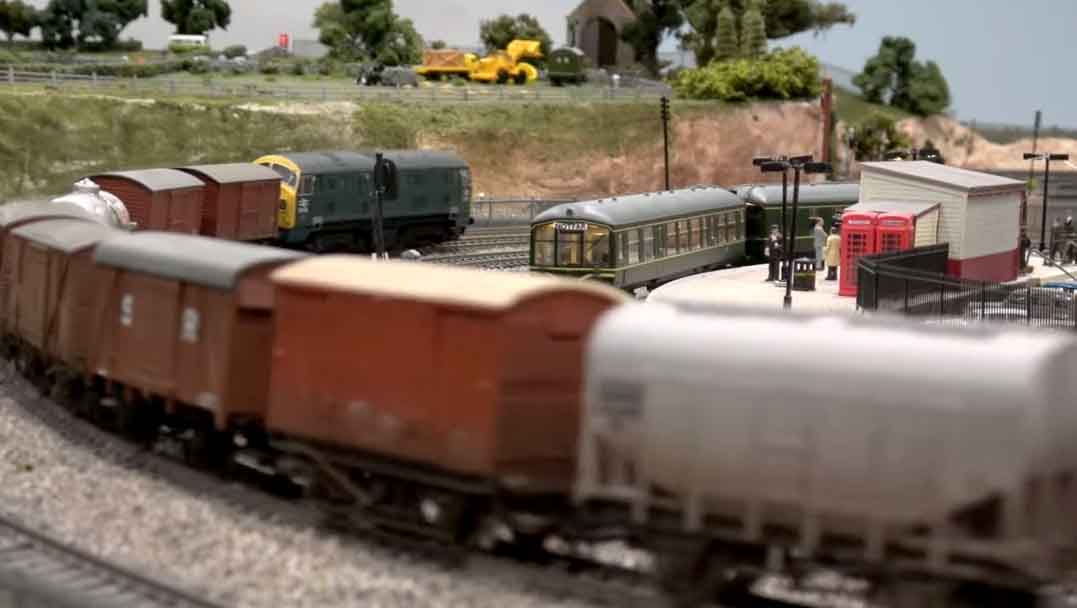
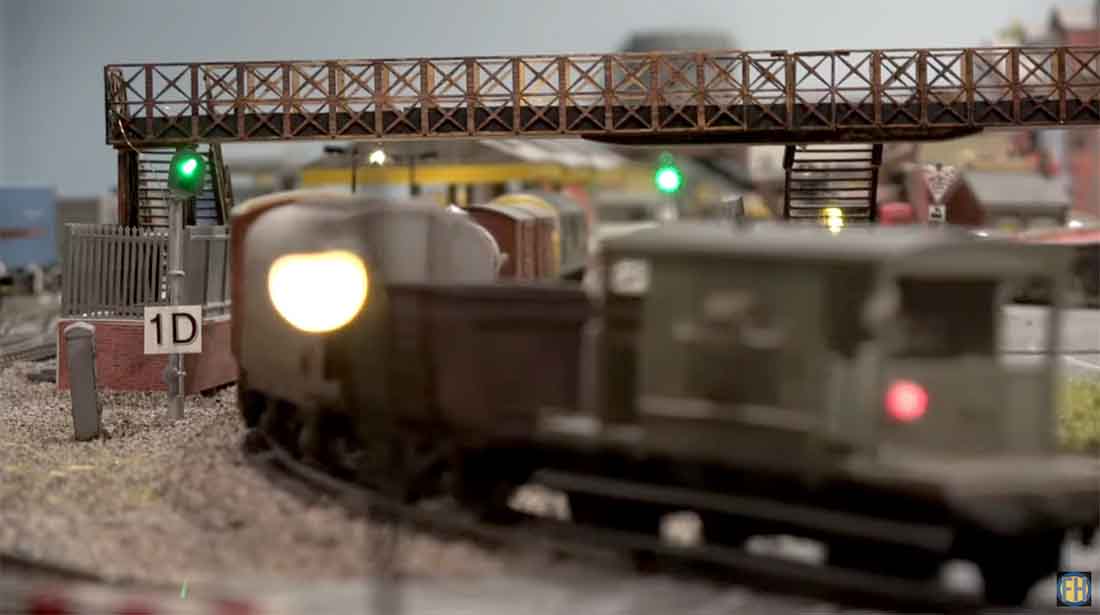
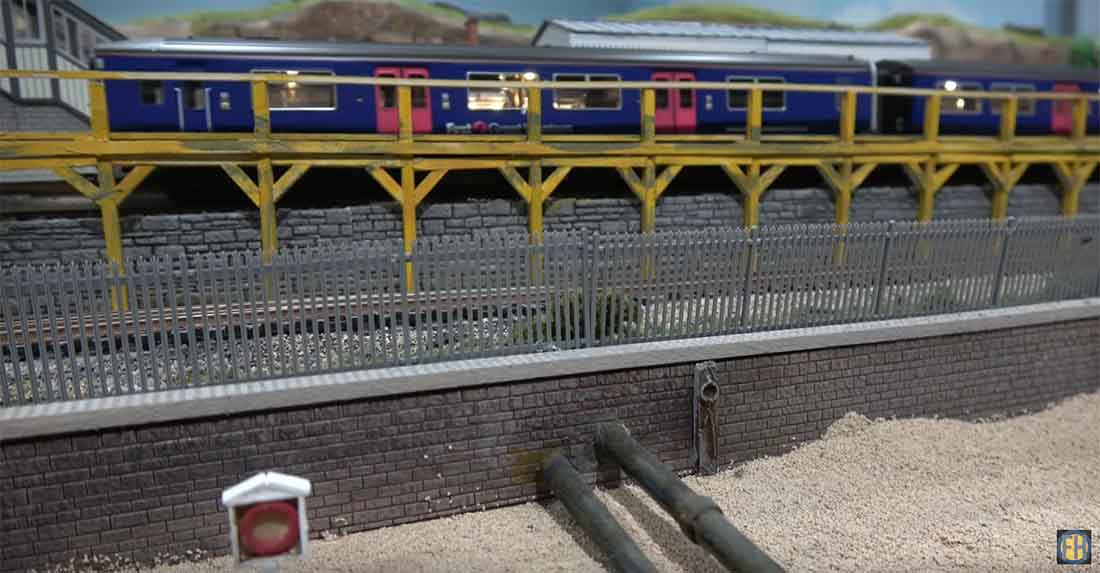
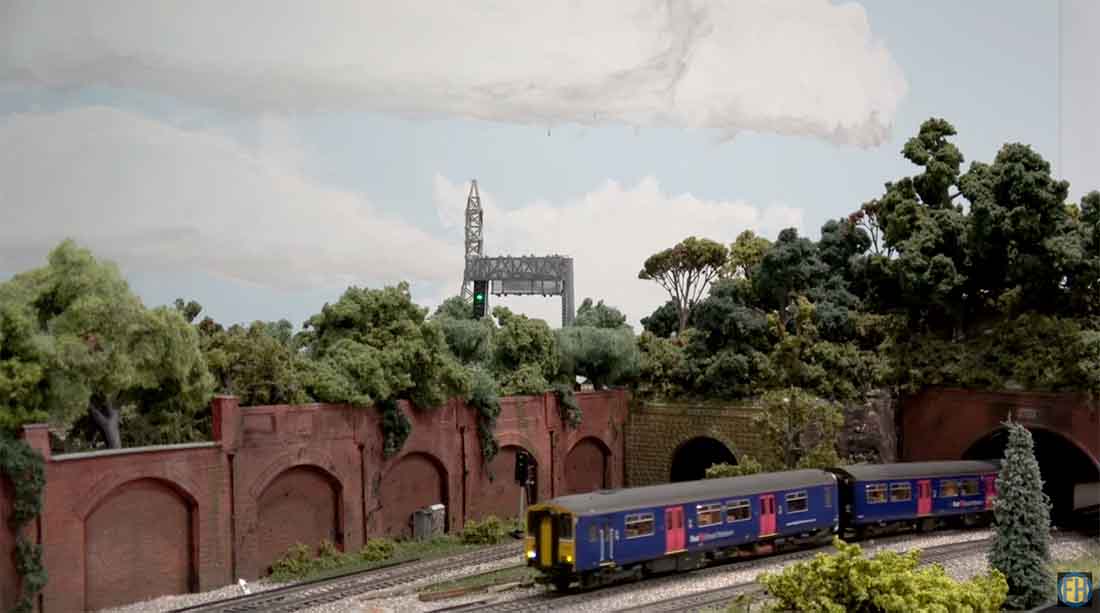
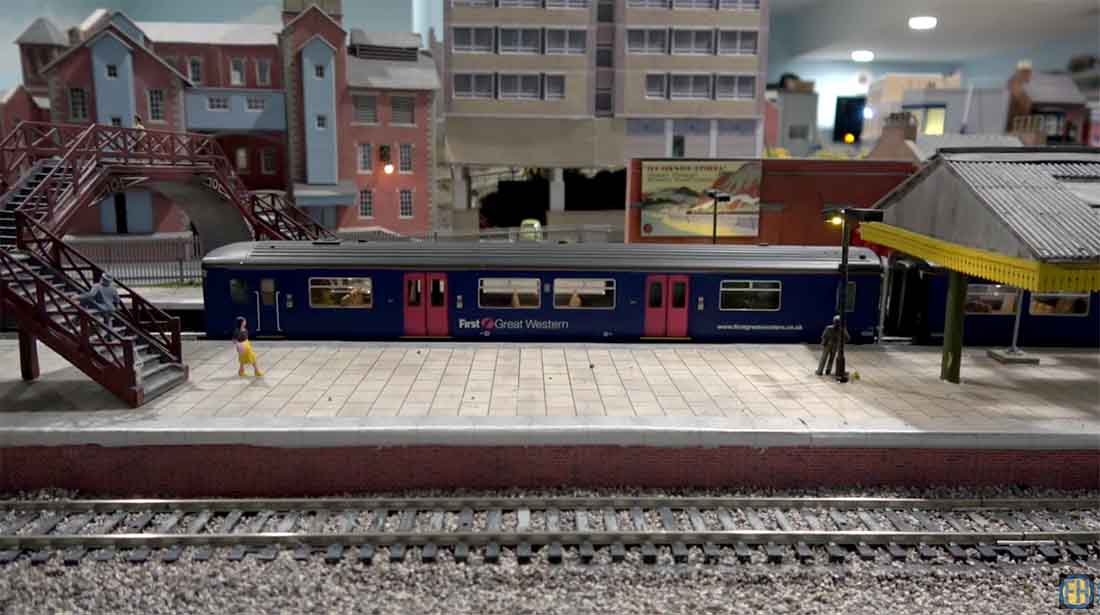
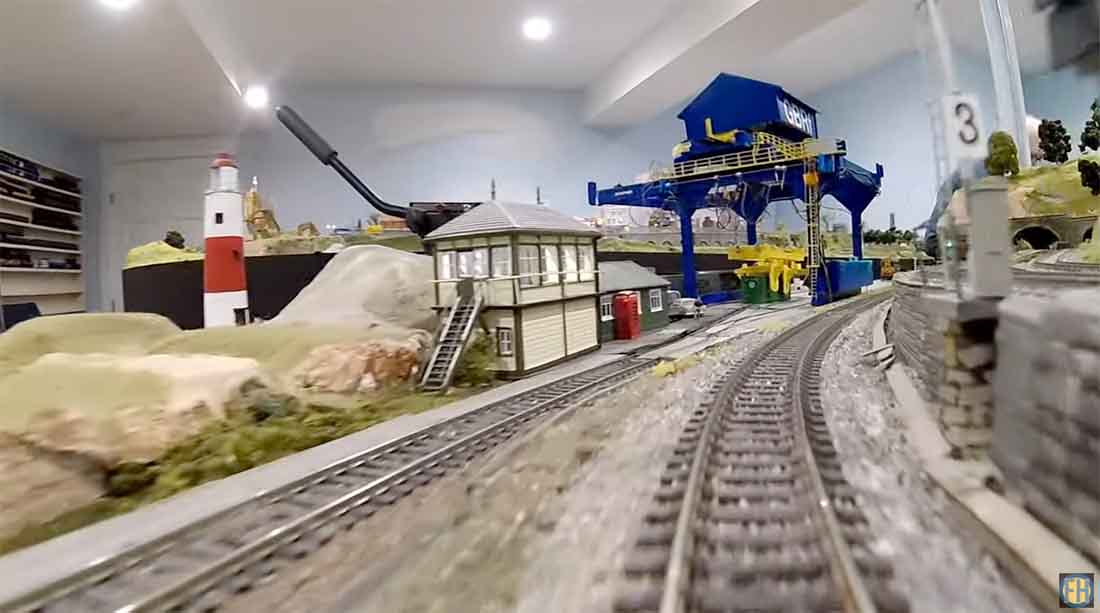


Lovely track laying Rob, one very rarely sees such smooth curves and absence of kinks and twists on cabride videos. Your signal siting puzzled me a bit, we usually have a signal shortly before points (turnouts) and other obstructions like crossings, but yours often seem to be beyond? I see like me you’re fond of 3rd rail electric units, the old SR stock like 4CEPs seemed to run so effortlessly and with lots of characteristic noises. Have to get some outside 3rd laid though, no wonder they were standing still!
Rob, I am really impressed with your latest version of your railway. Such detail for such a large layout, I can only guess at the hours you have spent on this layout. Thank you so much for sharing this with us mere mortals! Can you publish a layout plan, just to complete the picture, so to speak. Many thanks Peter…
Wow! Amazing work! Thanks for sharing.
Ray from Massachusetts
Rob
As a minor leager in the train modeling game yet very much committed, people like yourself bring me great joy with your narratives, pics and videos. You sir are a master and major leager in this game and your sharing so others like myself can absorb and benefit is a wonderful thing. You have a gift- artistry, planning, creating and craftsmanship with great patience and are such an inspiration to guys like me. Thanks
And hurrahs to Big Al- the kiddies Pal- who lightens up the kiddies mornings each day.
Bless you all
George from LI, NY
Rob–great video and of course a great layout. The first part of the video needs to be re-edited to eliminate some of the long pauses and still shots between the passing of one train and the arrival of another. I don’t think we need to see the last car disappear before the new shots of a train appear. The long static shot of the train at the “beach” could be tighten. Of course it wouldn’t be realistic but we’re making a movie here and trying to keep the audience engaged.
Despite the Monday Morning Quarterbacking, you’ve built something to be proud of and for the rest of us to be envious. Good going!
Looks pretty kool.!!!!! Would like to see more. I hope mine turns out that goods.
Rob love your layouts and videos. The eye glasses are cool, nice to see your face. I’m very much a fan of your railroads. Rode on a Great Western railroad to Oxford a few years ago. Trying to be picky you need some passengers on your cars. I’m working on modeling Bavarian area railroad. With peat run locomotive, learned wonderful history of the German railroad before the DB came in to being.
Rob,
Your layouts are simply AMAZING! The incredible detail and realism make it a pleasure to watch your videos! Simply in awe of your work.
I to have had to tear apart my layout. It was due to installing a new hardwood floor. It had a number of duck unders. 74, youths! I’m 77. I used the time to design a new layout without any duck unders. I also made it two levels to give longer runs. It has 2% grades and a minimum 24 radius. I saved parts of the old layout to include in the new one. I still am making mistakes, but fewer. I’ll sent some photos soon.
Wow! To coin a phrase and an adventure in itself. Love your ridges and am always fond of mountainous ridges, mesas and such. I’m a big lover of things I cannot get, because a lot of tunnel portals, retaining walls and such I never see in USA. Do you get most of your buildings as kits which demand a lot of time in itself, unless you are very talented in that area of patience?
Love everything, I see and feel as realistic, but my only thing is as one other person said; you need people in your passenger cars.
Good job!
Magnificent work. I felt like I was riding in the cab.
I was taught never to put switches inside tunnels but the cab ride shows several. Isn’t that dangerous ?
Kudos Rob! Great stuff. Your track work is so smooth..not one wiggle from the camera! I agree with Mr. Mackay that your signal placement was a bit confusing, but it still conveyed a working railroad. Love the scenery and your structures are well placed and look excellent! Keep having fun, and thank you for sharing what you’ve done with all of us!
Rob, you have done a magnificent job with you layout. I hope you do not tear it up to make something different. You have done a great job. Enjoy and have fun.
From Dave, Niagara Falls Ontario Canada.
Thanks, Rob, for the video. N scale is a bit too small for me at 87. I am building an HO scale layout now using Marklin track. What is the story with the outside 3rd rail? I have seen it used in O scale, but never in Ho or N. I tried to utilize it in HO scale, but it didn’t work too well. Maybe with today’s modern materials, outside 3rd rail is possible. I am amazed at how well N scale trains operate. I can remember how unreliable HO trains were years ago. I never tried N scale because of the unreliability issue, but I guess that is no longer a problem.
To: Rod Mackay,
You seem to have information about outside 3rd rail. I have always wanted to use outside 3rd rail for an HO layout based on the 3rd rail system used on the Long Island Railroad. No one seemed to be interested in it. I have only seen it used on O scale club layouts many years ago. I guess most have abandoned it for 2 rail. Please tell me what you know about 3rd rail modeling.
Thank you Rob – For me an engine always pulled trains in the UK, once they were steam engines and the engine driver was the engineer, now they are diesel/diesel electric engines and just have drivers.